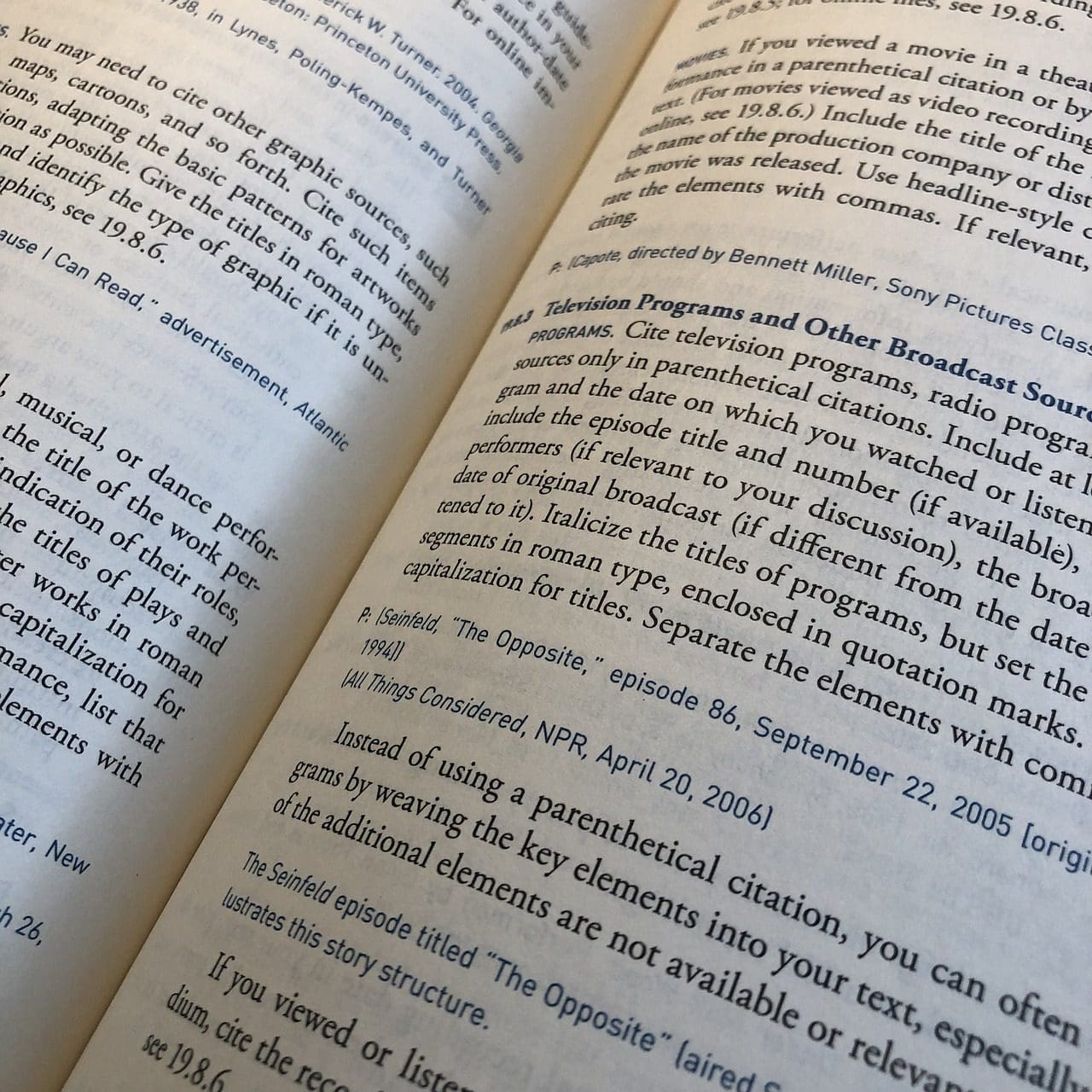A reference list appears at the end of a scholarly work, citing all sources directly referenced within the text. In contrast, a bibliography includes all sources consulted during research, even if not directly cited, offering a broader view of the literature relevant to the topic.
Key Takeaways
- A reference is a citation of a specific source used in a research work, while a bibliography is a comprehensive list of sources consulted during the research process.
- References are included in the main body of a document, whereas bibliographies are separate sections found at the end.
- Using a reference indicates that the source was directly quoted or paraphrased, while a bibliography may include quotations that were not now cited but informed the research.
Reference vs Bibliography
A reference is a citation within a text that shows the date, author, and page number, and it appears right below the essay and before the bibliography of the writing. A bibliography is a list that contains different information of the publisher, and it is located below the reference.

Reference is based on a primary source, but bibliography is based on a primary and secondary source.
Comparison Table
| Feature | Reference | Bibliography |
|---|---|---|
| Purpose | Provide credit and support for specific information used in the text | Offer a comprehensive list of sources consulted for further reading and exploration |
| Scope | Includes only sources cited within the text | Includes all sources consulted, even if not directly cited |
| Placement | Appears within the text (parentheses, footnotes, endnotes) or as a separate “References” page | Presented as a separate “Bibliography” page after the main content |
| Information Provided | Usually consists of author(s), year, and page number(s) | Provides detailed bibliographic information (e.g., author(s), title, publication information, year) |
| Length | Limited in number (only cited sources) | Can be extensive (all consulted sources) |
| Example | (Smith, 2023, p. 12) | Smith, J. (2023). The History of the Internet. New York: ABC Publishing. |
What is Reference?
A reference is a crucial element in academic and scholarly writing, serving as a tool to acknowledge and document sources used in research.
Definition and Purpose
- Credit and Attribution: References give credit to the original authors or creators of the information, acknowledging their intellectual contribution to the work.
- Scholarly Integrity: By citing sources accurately and transparently, references uphold the integrity of academic and scholarly writing, demonstrating a commitment to honesty and accountability in research.
- Verification and Reproducibility: References enable readers to verify the accuracy and credibility of the information presented in the text. They also facilitate further research by providing readers with access to the cited sources for deeper exploration.
Components of a Reference
- Author(s): The individual(s) or organization(s) responsible for creating the source material.
- Title: The title of the source, whether it’s a book, article, website, or other types of media.
- Publication Information: This includes details such as the name of the publisher, publication date, edition (if applicable), and the place of publication.
- Access Information (for online sources): For online sources, references may also include a URL or DOI (Digital Object Identifier) to facilitate access to the electronic version of the source.
Formatting and Style
References must adhere to specific formatting guidelines dictated by the chosen citation style. These guidelines govern aspects such as punctuation, capitalization, and the order of information within the citation. Common citation styles include APA (American Psychological Association), MLA (Modern Language Association), Chicago, and Harvard, each with its own set of rules and conventions.

What is Bibliography?
A bibliography is a curated compilation of sources utilized during the research process, regardless of whether they were directly cited in the text. Unlike a reference list, which specifically includes only cited sources, a bibliography encompasses a broader spectrum of literature relevant to the topic.
purposes of a bibliography
- Comprehensive Documentation: A bibliography offers a comprehensive record of all materials consulted during the research phase, providing readers with insight into the breadth and depth of the author’s engagement with the topic.
- Further Reading: By including sources beyond those directly referenced in the text, a bibliography guides readers to additional literature related to the subject matter, facilitating further exploration and deeper understanding.
- Acknowledgment of Sources: Similar to references, a bibliography acknowledges the intellectual contributions of authors and creators whose works have informed the research, even if not explicitly cited in the text.
Components of a Bibliography
- Author(s) and Editor(s): The individuals or entities responsible for creating or compiling the source material.
- Title: The title of the source, whether it’s a book, article, website, or other types of media.
- Publication Information: Details such as the name of the publisher, publication date, edition (if applicable), and the place of publication.
- Additional Information: Depending on the source type, a bibliography may also include relevant details such as volume and issue numbers for journal articles, URL or DOI (Digital Object Identifier) for online sources, or page numbers for chapters in edited volumes.
Formatting and Style
Similar to references, the formatting and style of a bibliography are governed by specific guidelines dictated by the chosen citation style (e.g., APA, MLA, Chicago). While the exact format may vary, common elements such as proper punctuation, capitalization, and the order of information within the citation are essential for maintaining consistency and clarity.

Main Differences Between Reference and Bibliography
- Scope:
- Reference: Focuses specifically on sources directly cited within the text.
- Bibliography: Encompasses all sources consulted during research, whether cited or not.
- Content:
- Reference: Includes only the essential details needed to locate cited sources (e.g., author, title, publication year).
- Bibliography: Provides a comprehensive list of all sources, including a wider range of materials beyond those directly referenced.
- Purpose:
- Reference: Primarily serves to give credit to sources cited in the text, verify information, and uphold scholarly integrity.
- Bibliography: Offers readers additional resources for further exploration and provides a comprehensive overview of the literature relevant to the topic.

Last Updated : 04 March, 2024


Emma Smith holds an MA degree in English from Irvine Valley College. She has been a Journalist since 2002, writing articles on the English language, Sports, and Law. Read more about me on her bio page.

The article effectively explains the importance and function of both references and bibliographies in academic writing, offering a nuanced understanding of their distinct roles in scholarly communication.
I couldn’t agree more, Courtney06. The article’s comprehensive analysis and emphasis on proper citation enriches readers’ knowledge of academic writing conventions.
Absolutely, Courtney06. The article’s focus on the purpose, format, and function of references and bibliographies enhances readers’ appreciation of their importance in scholarly discourse.
While the article effectively distinguishes between references and bibliographies, it would be beneficial to include examples of how to cite different source types within the text.
I see your point, Aiden. Examples of in-text citations for sources like books, journals, and websites would enhance the article’s practical utility for writers.
I agree, Aiden. Real-world examples of referencing different types of sources directly within the text would be a helpful addition to the article.
The article expertly distinguishes between references and bibliographies, offering a comprehensive guide that aids writers and researchers in maintaining the integrity of their academic work.
Absolutely, Jkennedy. The article’s focus on the purpose and format of references and bibliographies enhances understanding of their vital roles in academic writing.
I completely agree, Jkennedy. The detailed comparison table and explanatory sections effectively convey the nuances of proper citation practices.
This article makes an important and clear distinction between references and bibliographies, highlighting their different functions and purposes in academic writing. It’s a valuable resource for students and scholars alike.
I couldn’t agree more. The detailed comparison table really helped me understand the differences between references and bibliographies.
While the article provides a comprehensive overview of references and bibliographies, some examples of proper citation in different citation styles would have been helpful for practical application.
That’s a valid point, Sally. Including specific examples in APA, MLA, and Chicago styles would enhance the practical value of the article.
I see your point, Sally. The comparison table is informative, but real-world examples would be beneficial for readers applying these concepts in their own writing.
The comparison table effectively highlights the key differences between references and bibliographies, aiding readers in understanding their distinct functions in scholarly writing.
Indeed, Sonia. The clear delineation between references and bibliographies is a valuable contribution to scholarly discourse on academic citation.
I couldn’t agree more. The article’s emphasis on precise definitions and placement of references and bibliographies enhances clarity for readers.
This article offers a comprehensive and lucid explanation of references and bibliographies, providing a valuable resource for writers seeking to uphold academic integrity through proper citation practices.
I couldn’t agree more. The article provides insightful guidance on the ethical and practical aspects of referencing, benefiting both writers and readers.
Well said, Jennifer65. The article’s emphasis on the credibility, verifiability, and role of references in academic writing underscores their significance in scholarly communication.
While the article provides a detailed overview of references and bibliographies, it could benefit from a brief section on the importance of consistent and accurate citation in academic writing.
You raise a valid point, Carter. Exploring the implications of proper citation practices on academic integrity and the avoidance of plagiarism would add further depth to the article’s content.
The distinction between references and bibliographies is well articulated in this article, shedding light on the specific roles and formatting conventions of each. It’s a valuable resource for writers and researchers.
I couldn’t agree more. The detailed comparison and clear examples help demystify the confusing aspects of references and bibliographies.
Absolutely, Rdavies. The clarity of the definitions and the comparison table make this article a useful reference for understanding the nuances of academic citation.
This article effectively elucidates the distinctions between references and bibliographies, providing a clear understanding of their respective roles and significance in academic writing. A must-read for students and scholars.
I wholeheartedly agree, Gthompson. The article’s comprehensive analysis and examples contribute to a better grasp of the importance of proper citation.